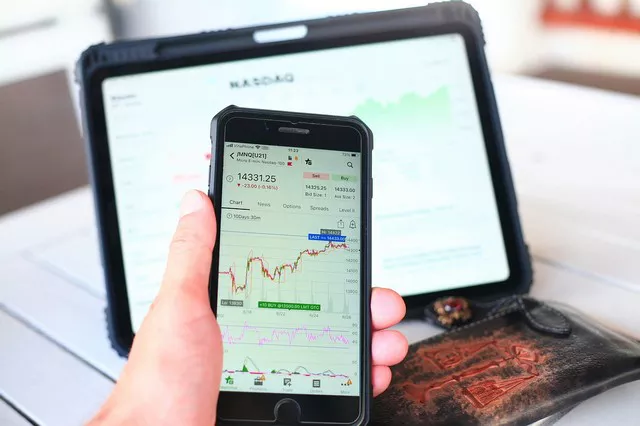The world of futures trading is dynamic and ever-changing, influenced by a myriad of factors such as economic indicators, geopolitical events, and market sentiment. Today, traders around the globe are actively engaged in futures markets, seeking to capitalize on price movements across a wide range of asset classes, including commodities, currencies, stocks, and interest rates. In this comprehensive analysis, we’ll explore the current landscape of futures trading, examining key trends, market dynamics, and opportunities that shape today’s futures market.
Global Futures Markets Overview
Futures markets operate around the clock, spanning multiple time zones and regions, providing traders with ample opportunities to participate in trading activities. Today, futures exchanges exist in major financial centers worldwide, including the Chicago Mercantile Exchange (CME) in the United States, the London Metal Exchange (LME) in the United Kingdom, and the Tokyo Commodity Exchange (TOCOM) in Japan, among others. These exchanges offer a diverse range of futures contracts, allowing traders to access various asset classes and markets.
Key Trends in Today’s Futures Market
Several key trends are shaping today’s futures market, including:
1. Increased Retail Participation: The rise of online trading platforms and brokerage firms has democratized access to futures markets, leading to increased participation from retail traders. Retail investors are now able to trade futures contracts from the comfort of their homes using desktop computers, laptops, or mobile devices, allowing them to take advantage of market opportunities and execute trades with ease.
2. Growth in Electronic Trading: Electronic trading has revolutionized futures markets, enabling traders to execute orders electronically in real-time. Today, the majority of futures trading occurs electronically, with traders accessing trading platforms provided by exchanges or brokerage firms. Electronic trading offers several advantages, including faster execution, improved liquidity, and increased transparency.
3. Expansion of Contract Offerings: Futures exchanges continue to expand their product offerings to meet the evolving needs of market participants. Today, traders can access futures contracts on a wide range of underlying assets, including commodities such as crude oil, gold, and agricultural products, as well as financial instruments such as stock indexes, interest rates, and currencies. The availability of diverse contract offerings allows traders to tailor their trading strategies to different market conditions and investment objectives.
4. Integration of Algorithmic Trading: Algorithmic trading, also known as automated or algo trading, has become increasingly prevalent in futures markets. Algorithmic trading uses computer algorithms to execute trading strategies automatically based on predefined criteria such as price, volume, and market indicators. Today, many institutional traders and hedge funds use algorithmic trading to execute large orders efficiently and capitalize on short-term price movements.
Market Dynamics in Today’s Futures Market
Today’s futures market is characterized by dynamic and fluid market dynamics, driven by a combination of fundamental, technical, and sentiment factors. Some of the key market dynamics include:
1. Price Volatility: Futures markets are known for their price volatility, with prices subject to rapid and sometimes unpredictable fluctuations. Volatility in futures markets can be influenced by various factors, including economic data releases, geopolitical events, weather conditions, and market sentiment. Traders must carefully manage risk and employ appropriate risk management techniques to navigate volatile market conditions effectively.
2. Liquidity: Liquidity is a crucial factor in futures trading, as it determines the ease with which traders can enter and exit positions at desired prices. Today’s futures market is generally highly liquid, with ample trading volume and tight bid-ask spreads in most actively traded contracts. However, liquidity can vary depending on the contract’s underlying asset, trading session, and market conditions.
3. Market Sentiment: Market sentiment plays a significant role in shaping price trends and trading patterns in futures markets. Today, traders closely monitor market sentiment indicators, such as the Commitments of Traders (COT) report, investor surveys, and social media sentiment analysis, to gauge market sentiment and identify potential trading opportunities.
4. Technological Advancements: Technological advancements have transformed the way futures markets operate, enabling faster execution, improved order routing, and enhanced risk management capabilities. Today, traders rely on advanced trading platforms, algorithmic trading strategies, and market data analysis tools to gain a competitive edge in futures trading.
Opportunities in Today’s Futures Market
Despite the inherent risks, today’s futures market offers traders a wide range of opportunities to capitalize on price movements and generate profits. Some of the key opportunities include:
1. Diversification: Futures trading allows traders to diversify their investment portfolios by gaining exposure to different asset classes and markets. By trading futures contracts on commodities, currencies, stocks, and interest rates, traders can spread their risk across multiple instruments and potentially enhance their overall returns.
2. Hedging: Futures contracts serve as valuable hedging tools for companies, investors, and institutions seeking to manage price risk associated with underlying assets. Today, businesses use futures contracts to hedge against fluctuations in commodity prices, interest rates, foreign exchange rates, and stock market indices, among others, to protect their bottom line and preserve capital.
3. Speculative Trading: Speculative traders actively engage in futures trading to capitalize on short-term price movements and profit from market volatility. Today, speculative trading strategies range from trend-following and momentum trading to mean-reversion and volatility trading, providing traders with a diverse array of opportunities to generate alpha in the futures market.
4. Arbitrage Opportunities: Arbitrageurs exploit price differentials between related futures contracts or between futures and cash markets to generate risk-free profits. Today, arbitrage opportunities exist in various forms, including calendar spreads, intermarket spreads, and basis trading, allowing traders to capitalize on temporary market inefficiencies and earn consistent returns.
Conclusion
In conclusion, today’s futures market offers traders a dynamic and dynamic environment to engage in trading activities across a wide range of asset classes and markets. With increased retail participation, growth in electronic trading, expansion of contract offerings, and integration of algorithmic trading, the futures market has evolved to meet the needs of modern traders and investors. By understanding key trends, market dynamics, and opportunities in today’s futures market, traders can develop effective trading strategies, manage risk prudently, and capitalize on market opportunities with confidence.


